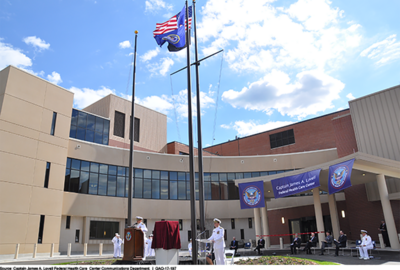

Veterans Affairs and the American Federation of Government Employees more than spar over the recommendations for realigning VA people and facilities
When it publicly released its plan to overhaul its infrastructure, the Veterans Affairs Department had already vetted the details around the country. Employees, bargaining units, the service organizations, and Congress had all received briefings. That’s why loud voices of reaction sounded even before VA posted the hundreds and hundreds of PDF pages.
If labor relations at VA had been testy already, they’re about to descend into a tooth-and-nail cage fight. VA’s main union, the American Federation of Government Employees, is dead set against the plan. VA management says it wants to realign its facilities to match the realities of a changing veteran population. AFGE says management wants to dismantle the system and toss veterans into the private health care system.
VA proposes closing or totally redoing 35 medical centers (VAMCs), affecting 21 states. Officials also recommend construction of 14 brand new medical centers and some 140 structures called multi-specialty community-based outpatient centers, or MS-BOCs. Twelve states will lose a total of 17 medical centers, those big, monumental VA hospitals. It’s a big, long and expensive plan, at nearly $100 billion.
Nothing will happen right now. The VA report is only recommendations. Now a new Asset and Infrastructure Review Commission — yet to be appointed by President Biden — has a year to decide what recommendations make it to the president. Who knows, this whole effort could end up like so many other long lists of Washington recommendations, stuffed into a VA container full of discarded sharps.
A wise former senior executive from VA once remarked wryly in a speech, “Just remember, every single VA hospital is a plum in some congressman’s district.” Meaning: A place could be tumbling down, the population of veterans it serves shrinking. But just try and close it. Go ahead, make my day.
Not surprisingly, Republicans in Congress welcome the plan. Democrats call it a “non-starter,” in the words of Montana Senator Jon Tester, who is no slouch on veterans’ issues. This bifurcation is discouraging, given that no one seriously wants to shortchange veterans. But somewhere between having a spiffy new hospital in each of the nation’s 3,006 counties and letting veterans fend for themselves lies the correct distribution of assets.
Initial arguments seem to center more on suspicions about the VA’s motivations rather than on the specifics of the recommendations. Jacqueline Simon, the AFGE’s policy director, told me the group that did the analysis consisted of people assigned by former VA Secretary Robert Wilkie. In other words, Trump. She said the group’s mandate was to take a wrecking ball to the system. She chides current Secretary Denis McDonough with moving ahead on them too zealously. That’s different from objecting to discontinuing outpatient services at the Palo Alto Livermore, California VAMC and moving them to a new facility in Pleasanton.
Simon also said that by not including data from the pandemic period, the recommendations are flawed. She has a point about data. The Government Accountability Office said VA’s supply-and-demand data included December 2018 to November 2020. But GAO did find significant gaps in the data VA used, and recommended the VA secretary review the data and make sure the AIR Commission knows about the completeness and reliability of VA data.
Check out my interview with GAO’s Sharon Silas on this matter. My interview with Simon airs this morning, and we’ll post it later in the day.
I have no judgment to offer for the VA plan. Reading some of the pages, it does seem like the result of detailed research. The recommendations and justifications are detailed and full of medical jargon. But I can’t say they look like a wrecking ball. Check them for yourself.
Wrecking ball or thoughtful reallocation of resources in light of trends in the veteran population, this much is certain: Union employees will be chasing VA around the country at hearings and local meetings to try and stop VA’s contemplated closures, what AFGE’s Simon called the “horrible recommendations.”
“We’ll be lobbying the [AIR] Commissioners, we’ll be lobbying the Congress. We’ll be participating in all the hearings that will be held throughout the country,” Simon said. She said AFGE will want to make sure everyone understands the effects the closures would have on the VA workforce and on the veterans it serves, noting the high percentage of VA employees who are themselves veterans.
Since George Washington, the federal government has been adding infrastructure. The new nation needed roads, dams, canals, and bridges. But infrastructure policy includes removal. Federal funding, for example, will pay for removal of 25 river dams in the coming year. As part of its newly-approved master plan, NASA’s Goddard Space Flight Center will tear down 25% of its building square footage over the next few years. Should VA be immune? We’ll find out, and it could get ugly.
The world’s fanciest McDonalds is in Asheville, North Carolina. It resides in the Biltmore village.
Source: Atlas Obscura
Copyright © 2024 Federal News Network. All rights reserved. This website is not intended for users located within the European Economic Area.
Tom Temin is host of the Federal Drive and has been providing insight on federal technology and management issues for more than 30 years.
Follow @tteminWFED

